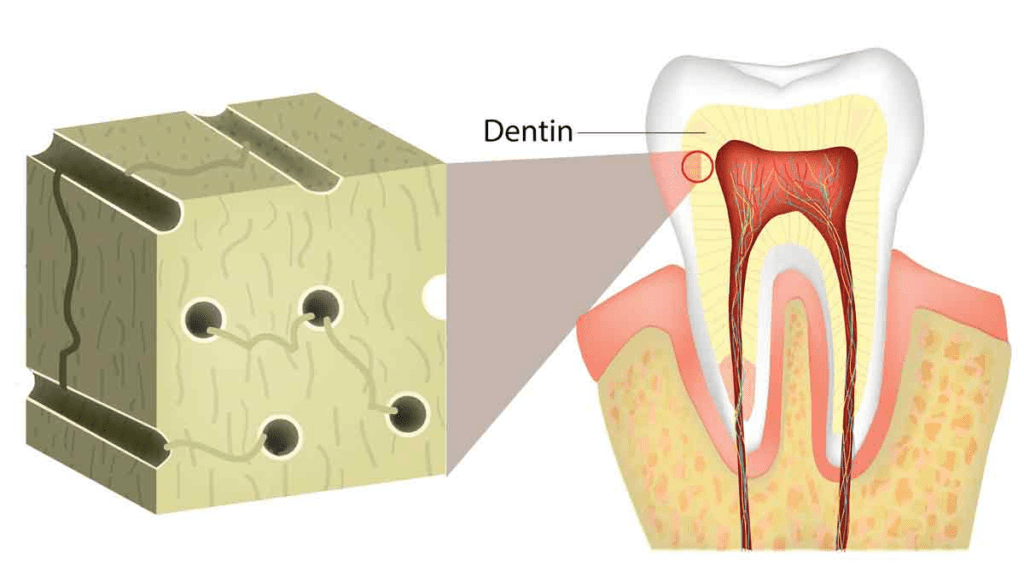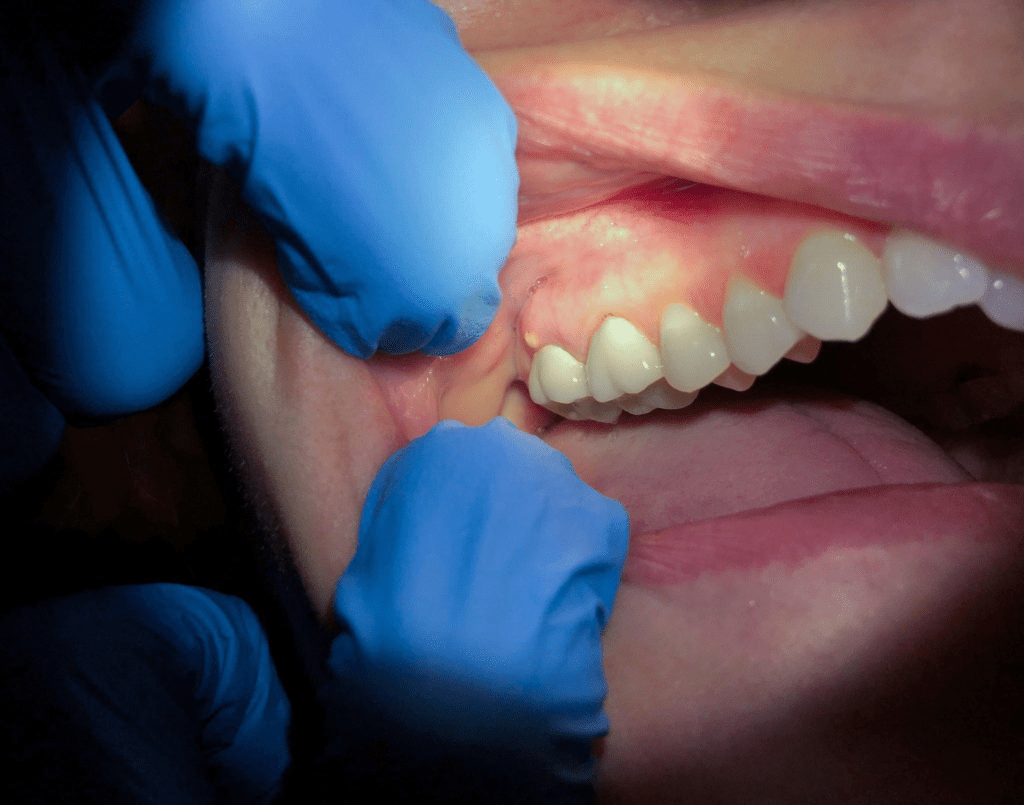Maintaining good oral health is essential for a healthy smile. However, even with proper oral hygiene practices, tooth decay can occur. In some cases, tooth decay can progress to a point where the tooth is badly decayed. When facing a badly decayed tooth, many individuals wonder if the tooth can be saved or if extraction is the only option.
The good news is that in many cases, a badly decayed tooth can be saved through various dental procedures. One common treatment option for saving a badly decayed tooth is a root canal. During a root canal, the infected tooth pulp is removed, and the root canals are thoroughly cleaned and sealed. This procedure allows the tooth to be saved and helps prevent further infection.
Another option for saving a severely decayed tooth is a dental filling. Dental fillings involve removing the decayed part of the tooth and filling it with a biocompatible material. This helps restore the tooth’s function and prevents further decay.
In some cases, for teeth that are extensively decayed or damaged, a dental crown may be recommended. A dental crown is a cap that is placed over the tooth to restore its shape, strength, and appearance. This treatment option can help save a badly decayed tooth and protect it from further damage.
It is important to note that the best treatment option for a badly decayed tooth depends on the extent of the decay and the individual’s oral health. Consulting with a dentist is crucial in determining the most appropriate treatment plan. By addressing tooth decay promptly, individuals can minimize the risk of tooth extraction and preserve their natural teeth.
Consulting with a dentist and addressing tooth decay in its earliest stages increases the likelihood of saving the tooth and avoiding extraction. Taking proactive steps to maintain good oral health and seeking timely treatment for tooth decay can help preserve the integrity of the tooth structure and ensure a healthy smile for years to come.
What is the Process of Tooth Decay?

Tooth decay occurs as a result of a complex process involving bacteria, plaque, acids, and damage to the tooth enamel. It begins when harmful bacteria in the mouth feed on sugars and starches from food particles left on the tooth’s surface. These bacteria form a sticky film called plaque, which adheres to teeth and releases acids.
The acids produced by the bacteria attack the tooth enamel, which is the protective outer layer of the tooth. Over time, this acid erosion weakens the enamel, causing it to break down and form small holes or cavities. As the decay progresses, the bacteria and acids penetrate deeper into the tooth structure, creating more significant damage.
One early sign of tooth decay is the formation of white spots on the tooth surface. These white spots represent the initial stage of mineral loss from the enamel. If left untreated, these spots can progress to cavities, indicating more severe tooth decay.
Several factors can contribute to tooth decay. Poor oral hygiene, including insufficient brushing and flossing, allows for the buildup of plaque and bacteria. Consuming a diet high in sugary and acidic foods provides an ideal environment for bacteria to thrive and produce more damaging acids. Dry mouth, genetic predisposition, and certain medical conditions also increase the risk of tooth decay.
To prevent tooth decay, it is crucial to maintain good oral hygiene practices, including regular brushing and flossing, using fluoride toothpaste, and visiting the dentist for check-ups and cleanings. By understanding how tooth decay occurs and taking the necessary preventive measures, individuals can work towards preserving their oral health and reducing the risk of tooth decay.
Tooth Decay Stages

Tooth decay is a common dental problem that occurs when the acidity in the mouth damages the tooth enamel, the outer protective layer of the tooth. This damage progresses through several stages if left untreated, leading to more significant problems and potential tooth loss.
Understanding the stages of tooth decay is crucial for early detection and intervention. The earliest stage starts with the formation of white spots on the tooth surface, indicating mineral loss from the enamel. If not addressed, these spots can progress to cavities, bringing about more severe decay.
As the decay progresses, the bacteria and acids penetrate deeper into the tooth structure, causing more significant damage. Without proper treatment, the decay can eventually reach the tooth pulp, leading to severe pain and the potential need for a root canal or tooth extraction. Regular dental check-ups, good oral hygiene practices, and a healthy diet can help prevent and manage tooth decay at all stages.
The First Stage is Initial Demineralization

Initial demineralization, the earliest stage of tooth decay, is characterized by the gradual loss of minerals from the outer layer of the tooth, known as enamel. This demineralization occurs when the tooth is exposed to acids produced by plaque bacteria.
As the enamel loses minerals, white spots may appear on the tooth surface. These spots are the initial sign of tooth decay and indicate that the tooth enamel is becoming weaker and more susceptible to damage. If left untreated, this stage can progress to more severe decay, leading to tooth sensitivity, pain, and potential tooth loss.
Fortunately, there is a way to reverse this initial demineralization and prevent further decay. Fluoride treatment is crucial in this stage, as it helps to remineralize the tooth enamel and make it stronger. Fluoride strengthens the tooth structure, making it more resistant to acid attacks and reversing the early signs of decay.
Regular use of fluoride toothpaste and receiving professional fluoride treatments through dental cleanings can significantly reduce the risk of tooth decay. Additionally, drinking fluoridated tap water and using fluoride mouth rinses as recommended by your dentist can further enhance oral health and combat enamel decay.
In conclusion, stage 1: Initial demineralization is the earliest stage of tooth decay, marked by the loss of minerals from the enamel. The appearance of white spots signifies this stage, and the use of fluoride treatment is vital to reverse the process and strengthen the enamel to prevent further decay. Taking proactive measures and maintaining good oral hygiene is essential in preserving the health of your natural teeth.
The Second Stage of Tooth Decay is Enamel Decay

Once the white spots on the tooth surface appear, it is a sign that enamel decay has begun. Without intervention, this stage can progress into the formation of cavities. Enamel decay occurs due to the gradual loss of minerals, making the enamel weaker and more susceptible to bacterial damage.
As the enamel continues to weaken, it creates an ideal environment for bacteria to thrive. Bacterial plaque builds up on the tooth surface, producing acids that attack the enamel. Over time, these acid attacks break down the enamel, leading to the development of cavities.
To treat cavities caused by enamel decay, dental fillings are commonly used. The procedure involves removing the decayed areas of the tooth and filling the resulting hole with suitable materials. These materials can include resin, ceramic, or dental amalgam.
By removing the decayed portions and filling the cavities, dental fillings restore the tooth’s structure and prevent further decay. They also protect the tooth from sensitivity and pain caused by exposure to temperature changes or contact with food.
It is crucial to address enamel decay promptly to prevent it from progressing to more severe stages. Regular dental check-ups, dental cleanings, and maintaining good oral hygiene practices are essential in detecting and treating enamel decay at its early stages.
In summary, enamel decay occurs when the initial white spots progress into cavities due to bacterial acid attacks. Dental fillings are commonly used to treat cavities and restore the tooth structure. Proper oral care and regular dental visits are crucial in preventing and managing enamel decay.
The Third Stage is Dentin Decay

Stage 3 of tooth decay, known as dentin decay, occurs when the decay process progresses beyond the enamel and reaches the softer layer beneath called dentin. Dentin is more vulnerable to decay compared to enamel due to its composition, which makes the decay rate faster.
Once the bacteria break through the enamel, they begin attacking the dentin, causing it to break down at a faster rate. This is because dentin is composed of tiny tubules that are interconnected, allowing bacteria and acid to penetrate deeper into the tooth structure. As the decay continues, the tubules become larger, leading to increased sensitivity and potential pain.
In the early stages of dentin decay, fillings can be used as a treatment option. Similar to enamel decay, the decayed portions of the tooth are removed, and the cavities are filled with suitable materials like resin or dental amalgam. Fillings restore the tooth’s structure, protect against further decay, and alleviate sensitivity.
However, in more advanced cases of dentin decay, where the damage is extensive, fillings may not be sufficient. Instead, dental crowns may be necessary. A crown is a cap that is placed over the entire tooth, providing strength and protection against further decay.
To prevent dentin decay from progressing to more severe stages, regular dental check-ups, proper oral hygiene practices, and a balanced diet low in sugary and starchy foods are essential. By addressing dentin decay promptly, you can preserve your natural teeth and maintain optimal oral health.
Stage 4: Pulp Damage
Stage 4 of tooth decay, also known as pulp damage, occurs when the decay reaches the innermost layer of the tooth called the pulp. The pulp is a vital part of the tooth as it contains nerves and blood vessels that supply nutrients and sensation to the tooth.
When the pulp becomes damaged due to extensive decay, the symptoms can be quite severe. Swelling around the affected tooth, significant pain, and sensitivity to hot or cold temperatures are common signs of pulp damage. In some cases, pus may also develop, indicating an infection.
To treat stage 4 tooth decay, a root canal treatment is often necessary. During a root canal, the damaged pulp is removed completely from the tooth cavity. This helps to alleviate the pain and prevent further spread of infection. After the removal of the pulp, the tooth is then cleaned, disinfected, and filled with a material called gutta-percha to seal the space.
Following a root canal, the tooth may also require additional support. In such cases, a dental crown placement is recommended. A crown is a cap-like structure that covers the entire tooth, providing strength and protection against further decay.
If left untreated, stage 4 pulp damage can lead to serious complications, including abscesses and the loss of the tooth. Therefore, it is crucial to seek dental care promptly to address this advanced stage of tooth decay.
Stage 5: Abscess

Abscess is the final and most severe stage of tooth decay. At this point, the decay has progressed to the extent that bacteria have invaded the pulp of the tooth, leading to infection and the formation of a pus-filled pocket called an abscess.
When an abscess forms, it can cause excruciating pain and swelling in the affected area. The infection may also spread to the surrounding tissues and bones, causing further complications.
To treat a tooth abscess, immediate dental intervention is crucial. One common treatment option is a root canal therapy, where the infected pulp is completely removed from the tooth cavity. The root canal is then cleaned, disinfected, and sealed with gutta-percha, a material that fills and seals the space.
However, in severe cases where the tooth cannot be saved, a tooth extraction may be necessary. This involves removing the decayed tooth entirely to prevent the spread of infection to other teeth.
It is important to seek professional dental care as soon as you notice any signs of an abscess, such as severe pain, swelling, or a lump around the affected tooth. Prompt treatment can help alleviate the pain, remove the infection, and prevent further complications.
Remember, regular dental check-ups, proper oral hygiene practices, and avoiding sugary and starchy foods can significantly reduce the risk of tooth decay and its progression to the abscess stage.
Treatments
When it comes to treating a badly decayed tooth, the specific treatment options depend on the stage of tooth decay. In the earlier stages, fluoride treatments may be recommended. Fluoride helps to strengthen the tooth enamel and prevent further decay. This treatment involves applying a fluoride gel or varnish to the tooth surface.
As the decay progresses, dental fillings become necessary. Fillings are used to remove the decayed portion of the tooth and fill the cavity with a material such as composite resin or amalgam. This restores the tooth’s structure and prevents further decay.
In cases where the decay has severely compromised the tooth’s structure, dental crowns may be the treatment of choice. Crowns are custom-made caps that cover and protect the entire tooth. They restore the tooth’s appearance, strength, and function.
For advanced decay that has reached the tooth’s inner pulp, a root canal may be needed. During a root canal procedure, the infected pulp is removed, and the inside of the tooth is cleaned and sealed. This helps to eliminate infection, alleviate pain, and save the tooth from extraction.
However, in cases where the decay and damage are too severe, a tooth extraction may be necessary. This involves removing the decayed tooth entirely to prevent further infection and complications.
In summary, fluoride treatments, fillings, crowns, root canals, and tooth extractions are all treatment options for badly decayed teeth, depending on the stage of tooth decay and the extent of damage. Seeking prompt dental care and following through with the recommended treatment is vital for preserving oral health.
Prevention
Prevention is key when it comes to avoiding badly decayed teeth. By implementing good oral hygiene practices and taking proper care of your teeth, you can significantly reduce the risk of tooth decay and the need for extensive dental treatments.
One of the most essential strategies in preventing tooth decay is maintaining good oral hygiene. This includes brushing your teeth with fluoride toothpaste at least twice a day and flossing regularly to remove plaque and food particles from between the teeth. Additionally, it is important to reduce snacking, especially on sugary and starchy foods, as they can contribute to the growth of harmful bacteria that cause tooth decay.
Regular dental checkups also play a crucial role in prevention. By visiting your dentist every six months for routine cleanings and checkups, you can detect early signs of tooth decay and gum disease. The dentist can provide professional cleanings to remove any plaque or tartar buildup that may contribute to decay. They can also offer advice on proper oral hygiene techniques and recommend fluoride treatments to strengthen the tooth enamel and reduce the risk of cavities.
Maintaining a balanced diet is another key aspect of preventing tooth decay. Consuming a variety of nutrient-rich foods and limiting foods and drinks that are high in sugar can greatly minimize the risk of tooth decay. By following these preventive measures and visiting your dentist regularly, you can maintain good oral health, prevent tooth decay, and ensure a healthy smile for years to come.
When is the Appropriate Time to Visit a Dentist?
Regular dental visits play a crucial role in maintaining good oral health and preventing tooth decay. But when should you see a dentist for tooth decay and other dental conditions? Here are some guidelines to consider:
- 1. Regular Check-ups: It is recommended to visit your dentist every six months for routine check-ups. These visits allow your dentist to identify any early signs of tooth decay and take necessary preventive measures. Early detection is key in stopping further damage and preserving your oral health.
- 2. Persistent Pain: If you experience persistent toothache or pain, it is important to see a dentist promptly. This may indicate advanced tooth decay or other dental conditions that require immediate attention and treatment.
- 3. Sensitivity and Discomfort: Sudden sensitivity to hot or cold foods and drinks, as well as discomfort while chewing, may be signs of tooth decay. These symptoms should not be ignored and should prompt a visit to the dentist.
- 4. Bad Breath: Persistent bad breath, even after proper oral hygiene practices, can be a symptom of tooth decay or gum disease. If mouthwash and regular brushing do not alleviate the issue, it is best to consult a dentist.
- 5. Visible Decay or Discoloration: If you notice signs of decay, such as visible cavities, white spots, or discoloration on the tooth surface, it is recommended to seek dental care immediately. These are clear indications of advanced-stage tooth decay.
By following regular dental visits and seeking prompt dental care when necessary, you can prevent further damage and ensure the health of your teeth and gums. Remember, early detection and intervention are key in maintaining a healthy smile.






